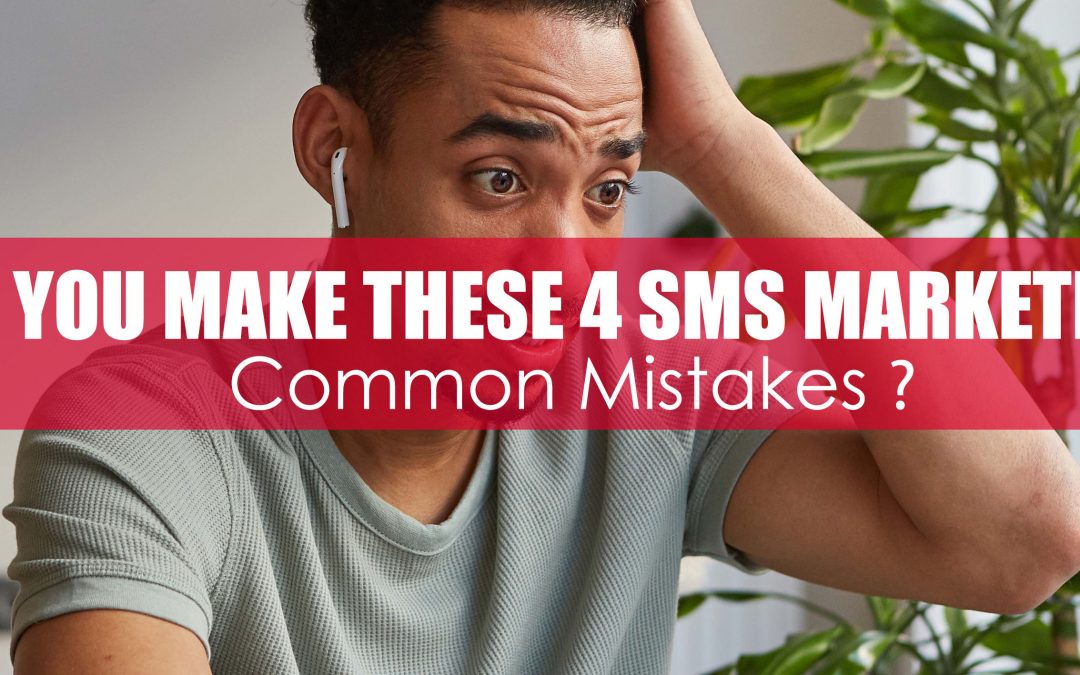SMS marketing is incredibly powerful – especially with shortcode SMS marketing services from companies like Broadnet Technologies.
As a business owner, you comprehend that with any new venture, you’re going to make mistakes. The same goes for marketing. When you launch a new marketing campaign, you will make mistakes. Some are bigger than others. This is also the case with SMS marketing. Mistakes with SMS marketing can lose you a few customers, and it could even lead to a lawsuit. While you’re sure to make some mistakes, here are some tips for avoiding some of the most common (and severe) ones.
Using Broadnet Technologies, your business can quickly send hundreds of custom-tailored SMS marketing messages directly to customers – providing you with an extremely valuable marketing tool.
It’s been determined that nearly 90% of SMS messages are read within three minutes of being received. When you compare this statistic to emails, which have only about a 25% open rate at best, it’s easy to see the value of SMS marketing.
However, text message marketing isn’t foolproof. It’s easy to make the mistake of using this techno loss go incorrectly. So, to help you market more effectively, we’ve put together a list of the most common SMS marketing mistakes – and how to avoid them.
Texting without permission
As SMS marketing mistakes go, this is one of the most dangerous. Text message marketing is regulated by federal law. Under the Telephone Consumer Protection Act (TCPA) you must have consumers’ permission before you send them a text. If you do not get this permission, you could be fined or even face a lawsuit. Make sure you understand the regulations surrounding SMS marketing before you launch your campaign.
Improper Call to Action (CTA)
The dilemma: The Call To Action (CTA) is the courage and soul of your SMS marketing strategy. This is the text that asks a customer to do something – come in for a discount on a meal, enjoy a half-price haircut, bring a guest to your gym for free, and so on.
CTA is the most important part of your SMS message. Without a strong, obvious CTA, your customers won’t understand what your marketing message is trying to say, which results in an ineffective campaign.
How to solve it: To solve this issue, it’s best to follow CTA best practices. This article is a great resource. Basically, you want to make your CTA:
- Clear
- Concise
- Obvious
- Appealing
Frequency
Business owners new to SMS marketing are often unsure of how often they should be texting their customers. There’s a fine line between texting too much and texting too little. You don’t want to text so little that your customers forget about you between texts. At the same time, however, no one likes getting texts multiple times a day from the same brand. Find a good middle ground that works for you.
The dilemma: Some SMS marketers think that it’s okay to send their customers a message every day – or even more frequently than that. This is not the case.
The fact that text messages have a 90%+ open rate is a good thing – but that also means customers will quickly become annoyed if you “spam” them with irrelevant messages. They’ll suggest like you’re taking advantage of their trust – and they’re likely to block your number, or unsubscribe from your SMS messaging list.
How to solve it: Limit yourself to 1-2 messages per week, per customer. In addition, each of these messages should provide some kind of value to your customer – information about new items in stock, discounts, daily deals, and other information.
If you send only a limited number of messages, and they all provide a clear benefit to your customers, they’re much more likely to feel good about signing up for your SMS list, and they won’t unsubscribe.
Sending Messages at the Wrong Time
Just as important as the frequency of your texts is the timing of them. Obviously, your customers will not appreciate being texted late at night or in the morning. But even if you’re texting in the afternoon, it may be the wrong time for your message and your audience. Think about your audience and your call-to-action. In many cases, there is a specific time of day or a particular day of the week where that message will be the most effective.
The problem: Again, this problem is related to the immediacy of text messages. Unlike an email, which may sit in a customer’s inbox and be read at any time, customers almost always read text messages right away.
This means that you need to time your text messages correctly to make them effective. After all, it’s silly to send a customer details about a sale at your store at midnight – when you’re already closed!
How to solve it: Try to send text messages from around 5-7 PM. During this time, customers are usually relaxing at home, and are not destined to feel interrupted by an SMS message.
Obviously, there are exceptions. If you run a food truck or restaurant, for example, you may want to send out messages about discounts and menu specials from around 11 am-1 pm – peak lunch hours.
Creating Generic SMS Campaigns
People text because it’s a quick and concise form of communication. It avoids many of the pleasantries of spoken communication and even email. Consumers have come to expect that commercial texts will likewise be short and to the point. Don’t weigh down your texts with unnecessary information. Have a clear purpose for your text and make sure every word is aimed at achieving that purpose. In addition to sending a clear, compact text, make sure you include a clear and concise call-to-action.
The dilemma: It’s tempting to create a “one-size-fits-all” messaging campaign, and send the same messages to all of your customers and clients. However, this is a mistake.
The effectiveness of your campaign can be maximized by sending relevant knowledge to customers – and appealing to them with offers that are tailored directly to them.
For example, say you run a surfing and skateboarding shop. Would you send a surfing promotion to a customer who gave you their phone number after coming in for a new skateboard? You could – but it probably wouldn’t be as effective as a message that was more related to their interest in skateboarding.
How to solve it: If you can classify your customers and tailor messages directly to their interests, age, previously bought products, and other details, you can dramatically increase conversion rates and marketing efficiency.
Experience – And Avoid – These Mistakes. Maximize Your SMS Marketing Efficiency!
A service like Broadnet Technologies is great for this. You can quickly organize customers into separate lists based on their interests, ages, and more – and this lets you send out customized, personalized SMS messages quickly and easily.
By simply following this set of best practices, you can seriously revolutionize the way you use SMS marketing in your business.
So take another look at these marketing techniques now, and think about how you can use the power of SMS marketing to increase revenue, bring in more customers, and raise levels of customer loyalty today!

